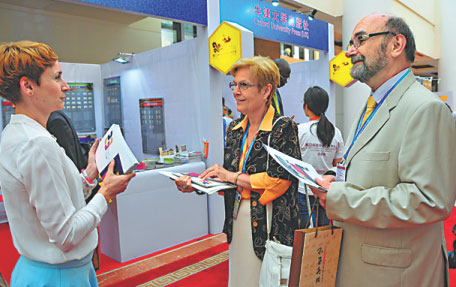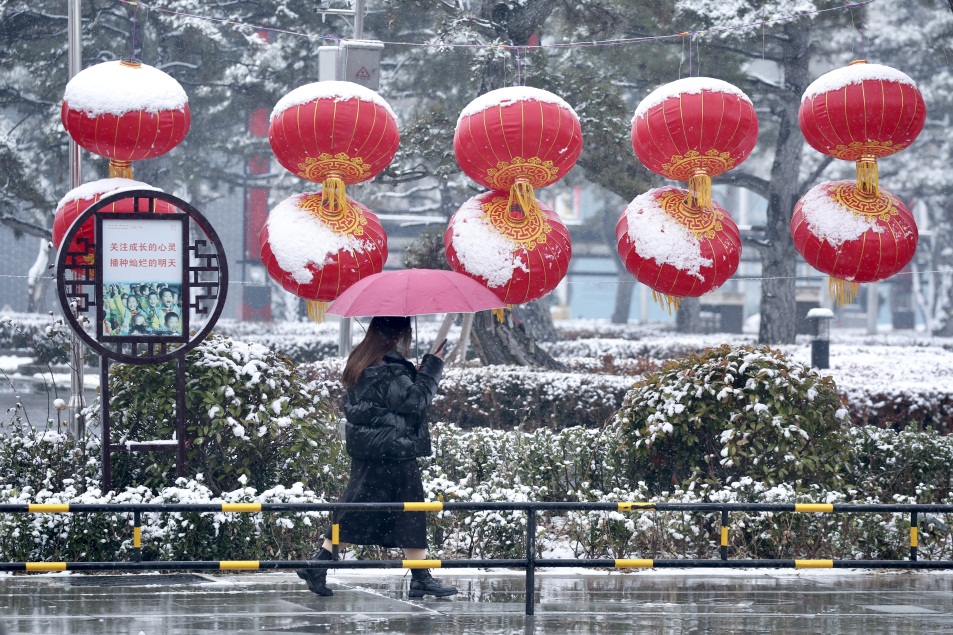Six Shandong cities showcase province's influential history
 |
|
Participating representatives talk at the world's most influential academic event on historical sciences in Jinan, on Sunday. [Photo by Wang Qian / China Daily] |
During the ongoing 22nd International Congress of Historical Sciences, six themed discussions will be held in different cities of Shandong province - Jinan, Qingdao, Zibo, Tai'an, Jining and Liaocheng.
"It is the first time that a single session of the conference is being staged in different cities," said Zhang Rong, president of Shandong University, one of sponsors and a co-host of the congress, being held in Shandong province from Sunday through Saturday.
"In this way, we hope to display different features of the province's six famous historical and cultural cities to the world," he added.
During the conference in Jinan, scholars will discuss the study of Longshan culture and the origins of Chinese civilization.
In 1928, relics of an ancient culture were found in Longshan. The late Neolithic culture flourished on the central and lower reaches of the Yellow River between 3,000 BC and 2,000 BC. The scholars will share the latest research on the Chengziya archaeological sites in Longshan and the latest achievements in the protection of the Longshan heritage.
The site, with an area of 3 square kilometers, has unearthed many relics, including stone implements, bone utensils and pottery. Some of the pottery is as thin as eggshells, which demonstrates the sophistication of the ceramics industry in ancient China.
It is an important site for the study of early Chinese civilization. With the theme of urbanization and internationalization, the meeting in Qingdao, one of most dynamic coastal cities in China, will explore the development track of the city, and the rise of its manufacturing sector and marine science and technology. Last year, the city's GDP amounted to 869.21 billion yuan ($135.99 billion), the 14th-highest among all Chinese cities.
In Zibo, the capital of the ancient Qi state, one of the most powerful states for more than 800 years during the Spring and Autumn Period (770-476 BC) and the Warring States Period (475-221 BC), scholars will share their studies on Qi culture, the Great Wall of Qi and cuju - a sport played in ancient China that resembled modern soccer.
Cuju was listed in the first batch of national intangible cultural heritage items, and Linzi, a district of Zibo, was affirmed as the origin of the sport of soccer by FIFA in 2004.
Investigations have shown that the Great Wall of Qi built by the state stretched for 620 km across the province, from Jinan on the bank of the Yellow River to the coastal city of Qingdao in the east. According to Fang Hui, dean of the School of History and Culture at Shandong University, the Qi wall is more than 300 years older than the more famous Great Wall.
The meeting in Jining, the birthplace of Confucius, will be devoted to the study of Confucian civilization.
The Tai'an meeting will explore the culture of Taishan Mountain from a global perspective. Scholars will study the religious beliefs associated with Taishan Mountain, its culture and protections. Since ancient times, Chinese people have worshipped at Taishan Mountain and many Chinese emperors offered sacrifices to heaven and earth there, leaving relics of more than 20 ancient buildings and over 2,200 stone carvings on the mountain.
Canal culture and world heritage protection will be the theme of the Liaocheng meeting. Last year, the Beijing-Hangzhou Grand Canal was included in UNESCO's list of world cultural heritage sites. Liaocheng is one of the most important cities along the Grand Canal and has become an important research base for Chinese canal culture.

 Shandong: Where Excellence is made
Shandong: Where Excellence is made Building a Moderately Prosperous Society: The Tai'an Way
Building a Moderately Prosperous Society: The Tai'an Way Video: Jiunvfeng Park
Video: Jiunvfeng Park

